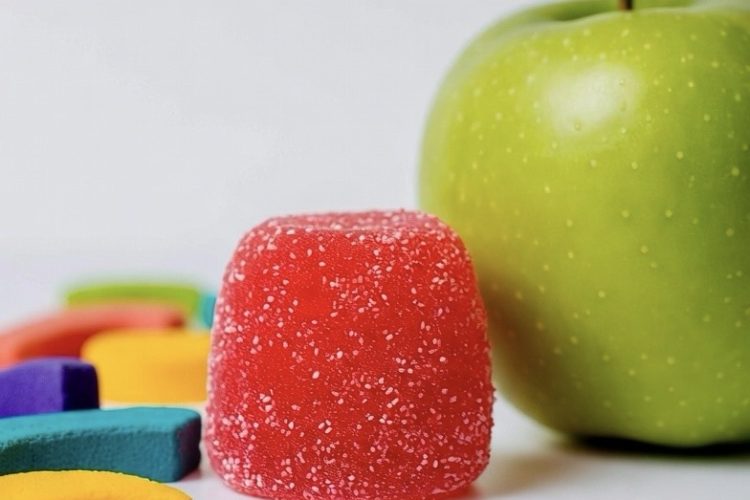Many food additives allowed in the U.S. are banned in Europe and other countries due to health risks. The FDA approves substances unless proven unsafe, while the European Food Safety Authority uses a precautionary approach, banning anything with potential harm. Common U.S.-allowed additives include potassium bromate (linked to cancer, banned in EU/China), BHA/BHT (possible carcinogens in cereals/snacks), azodicarbonamide (yoga mat chemical in bread), Red Dye No. 3 (thyroid tumors), titanium dioxide (DNA damage in candy), and rBST (growth hormone in milk). Others like BVO and trans fats were recently phased out. These chemicals may cause cancer, hormone disruption, and behavioral issues. Check labels, choose organic or whole foods, and support stricter regulations to reduce exposure.
Long Version
In an era where processed foods dominate grocery shelves, the stark regulatory differences between the United States and other nations, particularly in Europe, highlight ongoing debates about food safety and public health. While the Food and Drug Administration oversees food additives in the U.S., often allowing them unless proven harmful, the European Food Safety Authority adheres to the precautionary principle, banning ingredients if there’s any indication of potential health risks. This approach stems from international standards that prioritize consumer protection, contrasting with U.S. policies influenced by lobbying and economic competitiveness, where industry self-regulation plays a significant role. Organizations advocating for stricter controls have long pointed out how these discrepancies expose Americans to dangerous substances that could contribute to health risks like carcinogens and endocrine disruptions.
The “Generally Recognized as Safe” system permits companies to deem additives safe without mandatory agency review, leading to thousands of chemicals entering the market with limited oversight. In contrast, European regulations require rigorous proof of safety before approval, often resulting in bans on ingredients that remain permissible in the U.S. This framework ensures additives undergo thorough risk assessments, incorporating factors like exposure levels and emerging data. Such differences mean that while Europeans avoid certain chemical preservatives and artificial colors, Americans encounter them in everyday items, raising questions about long-term public health impacts. To enhance understanding, it’s worth noting that these regulatory gaps also extend to how additives are tested for interactions with other substances in the diet, an area where U.S. evaluations are often less comprehensive than their European counterparts.
Key Regulatory Differences and Their Implications
The U.S. and European agencies diverge fundamentally in their processes for approving and reassessing food additives. European assessments use scientific panels focused solely on hazard and exposure, mandating reevaluations of older additives. Decisions incorporate the precautionary principle, banning substances if harm cannot be ruled out, as seen with ongoing reviews of chemicals like bisphenol A. The U.S. system combines risk assessment and management, often relying on manufacturer data without public minority reports or systematic reevaluations of the thousands of allowed chemicals. This reactive stance means additives stay on the market until concrete evidence of harm emerges, sometimes decades later.
Lobbying by food industries in the U.S. further influences these policies, prioritizing economic competitiveness over stringent safety measures. For instance, while Europe bans growth hormones like recombinant bovine somatotropin due to animal welfare and potential human health risks, the U.S. permits them, citing insufficient evidence of direct harm. Similarly, genetically engineered ingredients and herbicides face mandatory labeling and restrictions in Europe but not in the U.S., where voluntary determinations bypass thorough scrutiny. These gaps contribute to broader public health concerns, as experts argue that cumulative exposure to such substances in processed foods may exacerbate issues like cancer and hormone imbalances. Enhancing this perspective, studies suggest that differing approaches to cumulative risk assessment—considering the “cocktail effect” of multiple additives—could explain higher reported sensitivities in U.S. populations to certain food-related allergens and intolerances.
Specific Food Additives: Uses, Risks, and Bans
Many common food additives in the U.S. are classified as banned ingredients abroad due to evidence of health risks, including carcinogens and other dangerous substances. Below is a detailed examination, drawing from scientific assessments and regulatory actions, with added insights into alternative options and historical context for better context.
Chemical Preservatives
Butylated hydroxyanisole and butylated hydroxytoluene are widely used in the U.S. to prevent rancidity in oils and fats found in cereals, snacks, and frozen foods. These preservatives are linked to cancer in animal studies—butylated hydroxyanisole as a possible human carcinogen and butylated hydroxytoluene to liver and lung tumors—yet remain allowed in the U.S. despite bans in the EU over these risks. Propylparaben, another preservative in bakery items like tortillas, disrupts hormones in animals and has been illegal in Europe since 2006. As an enhancement, natural alternatives like vitamin E or rosemary extract are increasingly used in reformulated products abroad, offering similar preservation without the associated risks.
Artificial Colors and Synthetic Food Dyes
Synthetic food dyes such as Red Dye No. 3, Yellow No. 5, Yellow No. 6, and Red No. 40 enhance the appeal of candies, cereals, and drinks. Red Dye No. 3 causes thyroid tumors in rats, prompting its ban in Europe and U.S. cosmetics, but it’s still in U.S. foods like gummies. Other dyes are associated with hyperactivity in children and cancer risks, leading to EU warning labels or bans, while the U.S. only banned Red Dye No. 3 in 2025. To provide more depth, behavioral studies have shown correlations between these dyes and attention deficits, prompting some schools to adopt dye-free policies, though widespread adoption lags in the U.S.
Dough Conditioners and Bleaching Agents
Potassium bromate strengthens dough in breads and pizzas, improving elasticity. Classified as a possible carcinogen, it may mutate DNA and promote tumors, banned in Europe, China, and India since the 1990s. Azodicarbonamide, dubbed the “yoga mat chemical,” whitens bread and breaks down into semicarbazide and urethane—carcinogens—during baking, prohibited in Europe but permitted in U.S. baked goods. Enhancing this section, historical bans trace back to early concerns in the 1980s, with some U.S. chains voluntarily phasing it out due to consumer pressure, illustrating how market demands can drive change ahead of regulations.
Emulsifiers and Stabilizers
Brominated vegetable oil stabilizes citrus flavors in sodas, linked to thyroid dysfunction, memory loss, and nerve issues in animals. Banned in the EU and Japan, the U.S. banned it in 2024, with a phase-out by 2025. Carrageenan, derived from seaweed and used in dairy and meats, faces restrictions abroad over digestive inflammation concerns but is considered safe in the U.S. For added insight, refined versus degraded forms of carrageenan differ in risk profiles, with the degraded type showing stronger inflammatory effects in lab tests, underscoring the need for precise labeling.
Whitening Agents
Titanium dioxide whitens candies, baked goods, and cheeses. It accumulates in the body, potentially damaging DNA and the immune system, leading to a 2022 EU ban after genotoxicity studies. The U.S. has not acted, despite similar petitions. To enhance, nanoparticle forms of titanium dioxide raise additional concerns due to their ability to cross biological barriers, a factor in ongoing global research.
Growth Hormones and Other Substances
Recombinant bovine somatotropin, or recombinant somatotropin, boosts milk production in cows, found in U.S. dairy. Banned in Europe for causing udder infections in animals and potential hormone-dependent cancers in humans, it’s allowed in the U.S. Trans fats, once common in margarine and snacks, raise heart disease risk; the EU caps them at 2g per 100g of fat, while the U.S. phased out partially hydrogenated oils by 2020. Inorganic arsenic in rice and juices poses neurotoxic risks, with stricter EU limits than U.S. guidelines. Adding depth, arsenic contamination often stems from soil and water sources, highlighting broader environmental factors in food safety that regulations must address holistically.
Health Risks and Public Health Implications
These additives contribute to health risks, from carcinogens in potassium bromate and butylated hydroxyanisole to endocrine disruptors in propylparaben and recombinant bovine somatotropin. Cumulative exposure through processed foods on grocery shelves may fuel rising rates of cancer, behavioral issues, and chronic diseases, with experts asserting that U.S. diets are “almost certainly” making people sick. The safety loophole exacerbates this, allowing untested chemicals that could harm immune and nervous systems. Enhancing this, epidemiological data links higher additive consumption to increased obesity and metabolic disorders, suggesting a need for longitudinal studies to quantify these effects more precisely.
Valuable Insights for Consumers
To enhance consumer protection, individuals can scrutinize labels, opt for organic or additive-free products, and support reforms like state-level bans. Advocacy pushes for aligning U.S. standards with international ones, potentially reducing lobbying influence and prioritizing public health over economic gains. Ultimately, understanding these regulatory differences empowers better choices, fostering a safer food system. For further enhancement, consumers can use apps or databases to scan products for additives, and choosing whole foods over processed ones minimizes exposure while promoting nutritional benefits.







